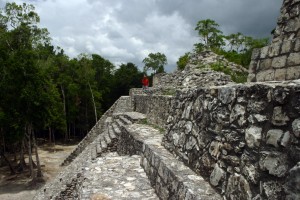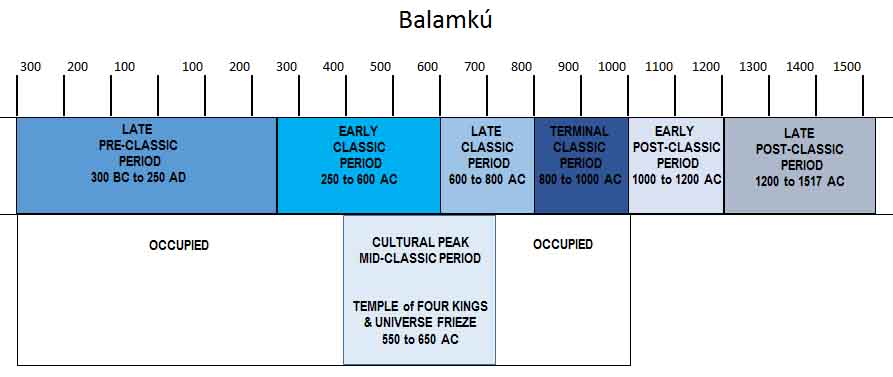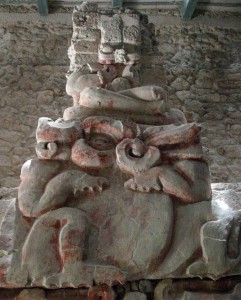
“House of the Jaguar”
Balamkú (or Balam Kú)”House of the Jaguar” (Balam / Jaguar; Ku / Home)
It was named after the jaguar in the remarkable frieze.
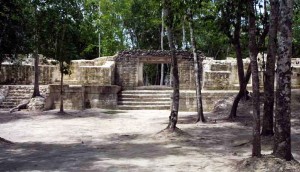
HISTORICAL NOTES
Balamkú was recently “rediscovered “in 1990. Mexican archaeologist Florentino García Cruz and INAH workers were investigating a reported looting of archeological works when they stumbled upon a trench built by looters and part of the amazing Universe Frienze that has made this site famous. The frienze was recovered and formal investigation and site restoration began in 1994.
Work continues today at the site.
DATES
Balamkú was occupied in the Late Pre-classic Period and declined in the Post-classic Period. The city peaked in the Classic Period.
LOCATION & DESCRIPTION
The Mayan Archeological site Balamkú is located in Mexico on the Yucatan Peninsula in the state of Campeche. It is a small site of approximately 1 square kilometer.
The site is divided into four architectural groups; The North Group, South Group, South West Group and the Central Group. Balamkú is associated with “Rio Bec” style of architecture.
The North Group has been mapped but not excavated. It has some structures measuring 15 meters (49 ft) tall surrounded by six plazas.
The South Group has four plazas and a large pyramid base 10 meters high;
The Southwest Group is comprised of two buildings which appear to form an astronomical function.
The Central Group has two plazas and the Temple of the Four Kings in reference to the famous stucco frieze called the “Universe Frieze.” This incredible work of art measures 16.8-metre (55 ft) long – one of the largest in the Mayan world. Even though it was created around 550–650 AC, you can still see traces of the original pigment – some reds and a touch of blue.
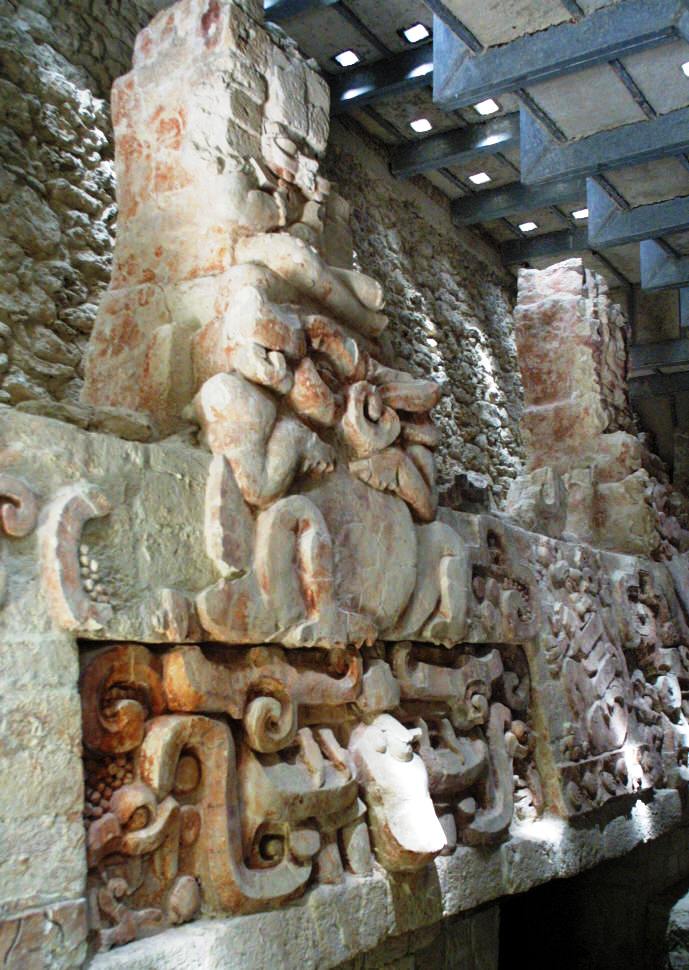
An INAH Sign at Balamkú interprets the artwork:
“Besides illustrating the opposite and complementary aspects of the underworld, Balamkú’s frieze compares dynastic and solar cycles. The king raises from the earth monster’s maw, just as the Sun emerges from the Earth’s mouth. The ruler’s death is seen as if it were a sunset, when he falls into the monster’s mouth.
A double emanation is illustrated: an amphibian arises from the earth monster’s cleft, and from its mouth the king emerges. The large masks and jaguars express the wealth of the earth, and the amphibian assures transition between these two worlds. Simultaneously this motif signifies glorification of the kingdom and the demonstration of its earthly origin and its nexus to fertility.
The frieze indicates the nature and function of the building where it belongs: the upper level corresponds to the earth’s surface, and the substructure is the underworld. Therefore, when someone enters through one of the building’s doors, it is as if they were penetrating the underworld.”
The frieze is currently securely locked and a security guard must let you in to view it.
HOURS
Open Daily from 8 am to 5 pm.
RECOMENDATIONS
As this is site is in a somewhat remote jungle area, take water and insect repellant. Dress according to the season you are visiting. You are likely to spend less than an hour at this site.
GETTING THERE
GPS – N 18*33.290 W 089*56.599
Tours
Tours and tour buses often add a small Balamkú add on to a Calakmul tour. Check when you are on location in the Yucatan.
Drive from Villahermosa:
Take Highway 186 to Escárcega and then East to KM 94. Turn at signs and drive North 3kms to entrance. Approximately 5 hours.
From Campeche:
Drive Highway 180 South to Champotón. Turn to Highway 261 to Escárcega. Turn on Highway 186 towards Chetumal and drive to KM 94. Approximately 3.5 hours.
From Chetumal:
Drive Highway 186 West to KM 94. Approximately 2 hours.
